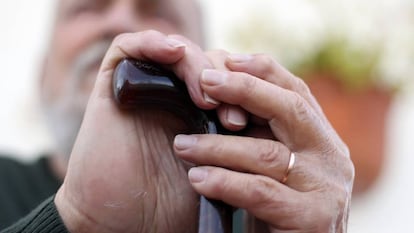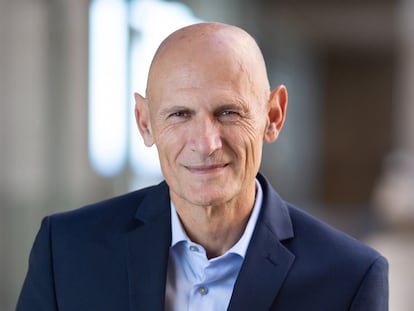Why men don’t live as long
Genetic, biological and environmental factors affect male longevity, which is 5.2 years shorter than women in high-income countries, and 3.8 years in low-income countries according to a World Bank study

Most people want longer lives, but are discouraged by the things they have to do to live a few more years. In 1939, a Cornell University (New York, USA) experiment restricted the calorie consumption of rats and succeeded in prolonging their lives by 33%. Other recent studies suggest that staying cold may help you live longer. Many other experiments on animals indicate that masculinity leads to shorter lives, and the drastic measure of castration will prolong them. Studies of castrated men in US psychiatric institutions revealed that they lived an average of 14 years longer than men who were not neutered, and historical studies of Korean eunuchs also show that they lived longer than men of the same social class.
It’s a well-known fact that females of most species, including humans, have longer life expectancies than males. World Bank data shows that women live 5.2 years longer than men in high-income countries and 3.8 years longer in low-income countries. There is a lifespan difference of almost 22 years between women in countries with the longest life expectancies and men in countries with the shortest life expectancies.
A 2021 study published in PNAS analyzed 101 wild animal species and estimated that females lived 18.6% longer than males, while the difference is only 7.8% for humans. Understanding the mechanisms that cause these differences, and whether modifying social norms would help extend healthy life spans in both sexes. A recent study of more than 3,200 mice published in Science magazine identified several parts of the genome that influence longevity, and found that these genetic effects vary by gender. It also showed that life expectancy depends on many factors that interact with the environment in a very complex ways.
Testosterone and estrogen
Among the biological factors affecting life expectancy, the effects of castration suggest that hormonal factors lead to shorter lives in men. Estrogen is known to benefit women by reducing bad cholesterol (LDL) and increasing good cholesterol (HDL). In contrast, testosterone increases men’s risk of having hypertension and cardiovascular disease. Moreover, androgens, which can produce sexually attractive features such as large antlers in male deer or strong musculature in men, also weaken their immune systems and make them more susceptible to infection and disease.
These biological factors also indicate that the distinct evolutionary trajectories of males and females may cause some life expectancy differences. Manuel Collado, who leads a research team on aging at Spain’s Health Research Institute of Santiago de Compostela (IDIS), cites biologist Tom Kirkwood’s theory: “Females have been evolutionarily selected to have a better capacity for body maintenance and repair, because males are more disposable.” For a male, having a few years of dominance and access to females may be appropriate for maximizing his reproductive capacity, even if that involves risk and attrition. “The females of many species need more time to produce more offspring and care for them so they can survive,” said Collado.
“The females of many species need more time to produce more offspring and care for them so they can survive.”Manuel Collado, Health Research Institute of Santiago de Compostela (IDIS)
This may be programmed into the biological characteristics of each sex. Some animal experiments indicate that the two X chromosomes in females provide better defenses than the XY combination in males. When a harmful defect appears in one of the two X chromosomes, it is neutralized, and its function is supplanted by an identical region in the intact X chromosome. However, since males only have one X chromosome, they lack this type of backup defense mechanism.
María Blasco, director of Spain’s National Cancer Research Center (CNIO), believes that greater female longevity could also be due to “… having longer telomeres, which in turn could be the result of estrogen activating the telomerase gene.” Telomeres are a protective element of chromosomes, the fundamental structures that store and preserve the genetic information of human life. Each time a human cell divides to generate another cell, the telomeres in both become a little shorter. Having overly short telomeres is associated with disease and premature aging. Blasco, who also heads CNIO’s telomeres and telomerase research group, says that their studies have “… demonstrated that women’s telomeres are longer than men’s until they reach menopause.” Blasco says that in some circumstances, protective factors can become a threat when new ones appear. For example, even if a man and a woman smoke the same number of cigarettes, “the woman is more at risk of getting cancer because of estrogen,” she said.
There is also a complex interaction between biology and environment. Analyses of longevity by social strata clearly show that poverty is related to poorer health and shorter life expectancy. However, women all over the world live longer than men, even though they usually have less control over their lives and poorer socioeconomic conditions. Male impulsivity and affinity for stimulating experiences, which may have biological origins that are culturally reinforced or tempered, is an important factor in higher male mortality, particularly among youths. Traffic data indicates that twice as many men than women die in traffic accidents. Men also drive faster and will get behind the wheel more often than women after taking drugs. This indicates that there is great opportunity for reducing premature mortality of both sexes, especially males, through sociocultural interventions.
“Certain [traditional female] roles, such as the caretaker role, focus more on health preservation, while males exhibit riskier behaviors”María Teresa Ruíz Cantero, professor of Preventive Medicine and Public Health, University of Alicante (Spain)
María Teresa Ruíz Cantero, a professor of Preventive Medicine and Public Health at the University of Alicante (Spain), thinks that a possible explanation for greater female longevity despite poorer social conditions is that “women nowadays have to get paying jobs while simultaneously fulfilling classic female gender roles. This generally motivates women to take better care of themselves than their partners, and also reduces the amount of available leisure time for consuming tobacco and alcohol. Certain [traditional female] roles, such as the caretaker role, focus more on health preservation, while males, especially younger ones, exhibit riskier behaviors like reckless driving or playing dangerous sports. There is no single answer as to why women live longer, but when men and women have similar exposures to risk, their life expectancies are also similar.”
Some of the factors affecting life expectancy are easy to identify but difficult to solve, such as smoking or alcohol consumption. But a better understanding of the processes that explain aging and how they differ by sex, can help develop targeted strategies for men and women. A recent study by the School of Gerontology at the University of Southern California (USA) concluded that although women now live longer and have more chronic health problems than men, these differences vary across historical time and between countries.
Historically, when infections were a major health problem in the world, stronger immune systems gave women an important advantage that has deteriorated over time. On the other hand, “cardiovascular weakness in men can be mitigated by managing risks [such as high blood pressure] and making behavioral changes,” said the USC study. “In a world dominated by cardiovascular disease and cancer, the role of differential behavior may increase as an explanation for differences in disease prevalence [or mortality]… Around the world, men are more in need of blood pressure treatment and women are more in need of lipid management.”
In an effort to distinguish between the biological and cultural aspects of greater female longevity, Marc Luy of the Federal Institute for Population Research (Wiesbaden, Germany) published a study in 2004 that compared mortality data for 11,000 Catholic monks and nuns in Bavaria (southeastern Germany) between 1890 and 1995. While Germany’s general population saw an increase in female life expectancy relative to men after World War II, the difference remained small among the cloistered clergy – the nuns generally lived just one year longer than the monks. Thus, Luy discovered that there is an alternative to castration for extending male life expectancy, although it still involves a difficult lifestyle choice.
Tu suscripción se está usando en otro dispositivo
¿Quieres añadir otro usuario a tu suscripción?
Si continúas leyendo en este dispositivo, no se podrá leer en el otro.
FlechaTu suscripción se está usando en otro dispositivo y solo puedes acceder a EL PAÍS desde un dispositivo a la vez.
Si quieres compartir tu cuenta, cambia tu suscripción a la modalidad Premium, así podrás añadir otro usuario. Cada uno accederá con su propia cuenta de email, lo que os permitirá personalizar vuestra experiencia en EL PAÍS.
¿Tienes una suscripción de empresa? Accede aquí para contratar más cuentas.
En el caso de no saber quién está usando tu cuenta, te recomendamos cambiar tu contraseña aquí.
Si decides continuar compartiendo tu cuenta, este mensaje se mostrará en tu dispositivo y en el de la otra persona que está usando tu cuenta de forma indefinida, afectando a tu experiencia de lectura. Puedes consultar aquí los términos y condiciones de la suscripción digital.










































